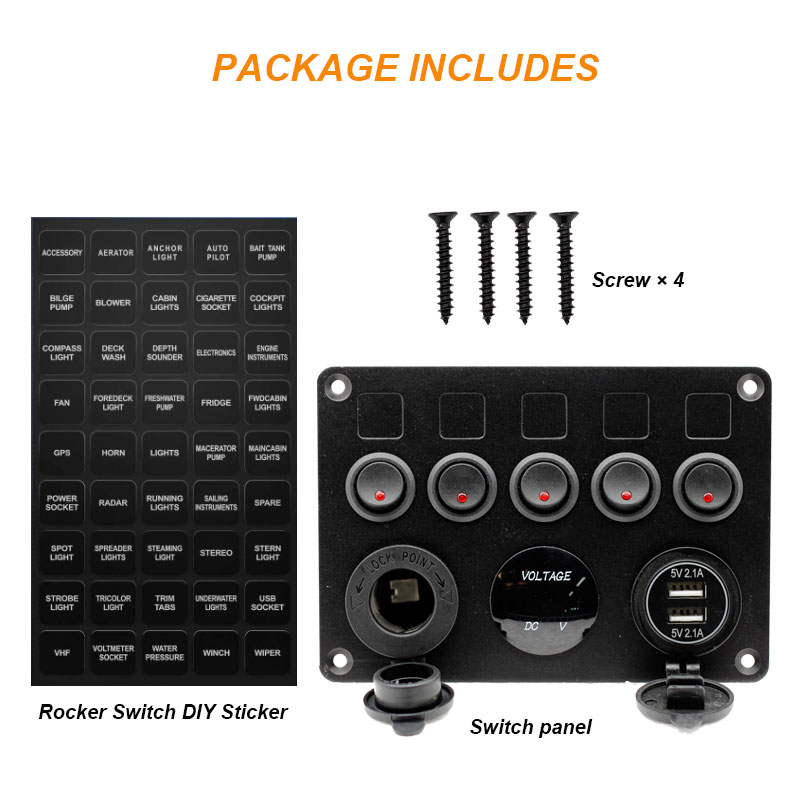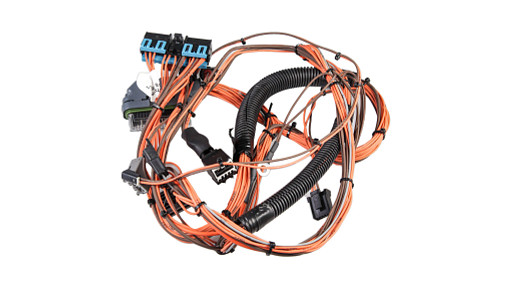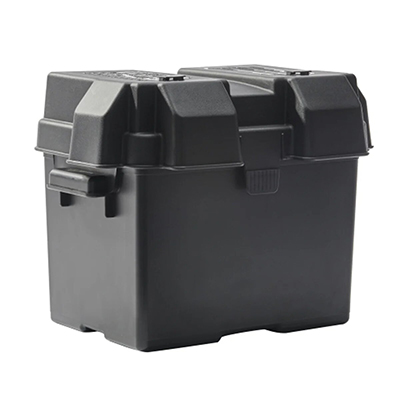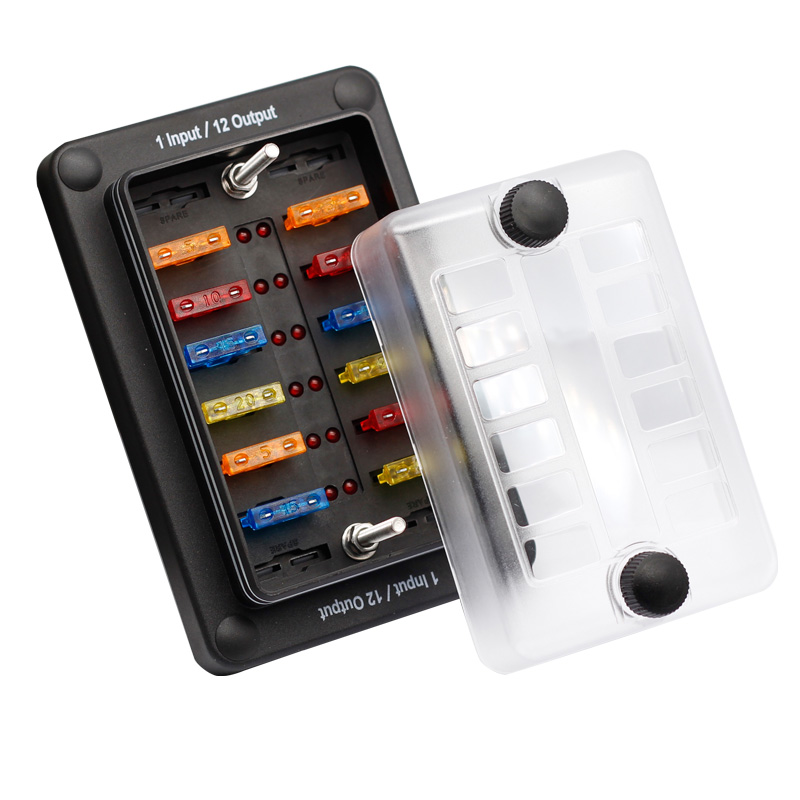Switch Panel Types and Professional Selection Methods
Case 2025-10-10
A switch panel is a centralized control unit that houses multiple switches, sockets, or indicators to manage electrical circuits efficiently. It serves as a core interface for controlling power distribution in various settings, from residential homes to industrial facilities. The right switch panel ensures safe, convenient, and reliable operation of electrical systems, while improper selection can lead to circuit overloads, operational inefficiencies, or safety hazards. Understanding the different types of switch panels and following systematic selection methods is crucial for meeting specific application requirements.

Common Types of Switch Panels
1. Residential Switch Panels: Designed for household use, these panels are compact, aesthetically pleasing, and typically accommodate 6-12 switches/sockets. They often feature flame-retardant ABS plastic housings (UL94 V0-rated) and are available in various colors to match interior decor. Common variants include modular switch panels, which allow flexible combination of switches, sockets, and USB ports, and smart switch panels that support remote control via smartphone apps or voice assistants (e.g., Alexa, Google Home). Residential panels usually operate at 110V/220V AC and have a maximum current rating of 16-20A per circuit.
2. Industrial Switch Panels: Built for harsh industrial environments, these panels are ruggedized to withstand vibration, dust, moisture, and extreme temperatures (-20℃ to 60℃). They are constructed with heavy-duty steel or aluminum enclosures (IP65 or higher protection rating) and feature reinforced mounting brackets. Industrial panels often include circuit breakers, overload protectors, and indicator lights for real-time circuit monitoring. They are used in manufacturing plants, warehouses, and construction sites, with voltage ratings ranging from 220V to 480V AC and current capacities up to 200A.
3. Automotive Switch Panels: Tailored for vehicles, these panels are compact, lightweight, and resistant to automotive fluids (oil, gasoline) and vibration. They are commonly made of heat-resistant PP plastic and integrate switches for lights, windows, audio systems, and other vehicle functions. For electric vehicles (EVs), specialized high-voltage switch panels manage power distribution to motors and charging systems, with insulation meeting IEC 60664 standards. Automotive panels typically operate at 12V/24V DC and have waterproof designs (IP67 rating) to withstand water splashes.
4. Marine Switch Panels: Engineered for marine environments, these panels are corrosion-resistant and watertight (IP67 or IP68 rating) to handle saltwater exposure. They use marine-grade aluminum or fiberglass housings and stainless-steel hardware to prevent rust. Marine switch panels often include switches for navigation lights, bilge pumps, and communication devices, and some feature built-in voltmeters to monitor battery levels. They comply with IMO (International Maritime Organization) regulations for safety and reliability at sea.
5. Commercial Switch Panels: Used in offices, hotels, and retail stores, these panels balance functionality and aesthetics. They are available in larger sizes (12-24 circuits) than residential panels and may include features like key locks for security and energy monitoring systems. Commercial panels are designed for higher traffic use, with durable materials that resist wear and tear, and operate at 110V/220V AC with current ratings up to 30A per circuit.
Professional Selection Methods for Switch Panels
1. Assess Application Requirements: Start by defining the application scenario (residential, industrial, automotive, etc.) and specific needs. For industrial settings, prioritize durability and environmental resistance; for residential use, focus on aesthetics and smart features. Determine the number of circuits to be controlled—this will dictate the panel size (number of switch/socket positions). For example, a small home may need an 8-circuit panel, while a manufacturing facility may require a 24-circuit industrial panel.
2. Verify Electrical Specifications: Match the panel’s voltage and current ratings to the system’s electrical parameters. Ensure the panel can handle the maximum current load of the circuits it will control—overloading can cause overheating and fire. For high-voltage applications (e.g., industrial machinery), select panels with appropriate insulation levels and circuit protection devices (circuit breakers, fuses). Check the panel’s short-circuit current rating (SCCR) to ensure it can withstand fault currents without damage.
3. Evaluate Environmental Conditions: Choose a panel with an IP rating suitable for the environment. For outdoor or wet areas (e.g., marine, construction), select IP65+ panels; for dusty industrial environments, opt for IP6X-rated panels that resist dust ingress. Consider temperature ranges—industrial panels should handle extreme hot or cold conditions, while automotive panels must tolerate engine bay heat.
4. Check Material and Durability: Select panels made of high-quality materials that meet industry standards. Residential panels should use flame-retardant plastics; industrial and marine panels require corrosion-resistant metals or composites. Inspect the panel’s construction for sturdy mounting points, secure wiring terminals, and durable switches/sockets that operate smoothly. Look for certifications like CE, UL, or ISO to ensure quality and safety.
5. Consider Functional Features: Depending on needs, choose panels with additional features. Smart panels for homes may include Wi-Fi connectivity or voice control; industrial panels may need indicator lights or overload protection; marine panels require waterproof switches and corrosion-resistant hardware. Ensure the panel has sufficient wiring space for easy installation and future upgrades.
6. Comply with Industry Standards: Ensure the switch panel meets relevant safety and performance standards. For example, industrial panels should comply with IEC 60439-1, residential panels with UL 67, and marine panels with IMO regulations. Compliance ensures the panel is safe to use and compatible with existing electrical systems.
Conclusion
Switch panels are essential components in electrical systems, with diverse types tailored to specific applications. By understanding the different types—residential, industrial, automotive, marine, and commercial—and following professional selection methods that consider application requirements, electrical specifications, environmental conditions, material durability, functional features, and industry standards, users can choose switch panels that ensure safe, efficient, and reliable operation. Investing time in proper selection not only prevents safety risks but also enhances the performance and lifespan of electrical systems.


